It’s Bitcoin season right now and being the leader of all cryptocurrencies, bitcoin price staying strong is good for the whole ecosystem. With bakkt and halving approaching things are looking great for Bitcoin.
Source: Google Trends
As we see in this image the global interest in Bitcoin is less than when bitcoin was at around $11,000 last time. This might continue till we see an all-time high on bitcoin and then every newspaper, the media outlet will be talking about bitcoin and crypto.
A $20,000 bitcoin might be too expensive for many and they may look for other alternatives. While bitcoin is doing great it’s hard to deny a lot of other blockchain projects have also been a lot of work to build value into their ecosystem.
Ethereum
Launched in 2015, Ethereum is a global, open-source platform for decentralized applications. On Ethereum, a programmer can write code that controls digital value, runs exactly as programmed, and is accessible anywhere in the world. Ethereum was proposed in late 2013 by Vitalik Buterin. There is no company or centralized organization that controls Ethereum. Ethereum is maintained and improved over time by a diverse global community of contributors who work on everything from the core protocol to consumer applications. The Ethereum community is the largest and most active blockchain community in the world.
Important applications of Ethereum include Cryptocurrency wallets, Financial applications, Decentralized markets, Games, etc. Notable Ethereum apps include
- IDEX, popular decentralized exchange
- Golem, a platform to harness computing power
- CryptoKitties, a game where you collect and breed digital collectible cats
- DAI, a stable cryptocurrency that holds value at $1 USD
Currently, Ethereum uses “Proof of Work”. Ethereum is currently working on “Layer 1” and “Layer 2” solutions to improve scalability.
“Layer 1” refers to improving the core Ethereum protocol through ETH 2.0. Focus is on decentralization, resilience, security, simplicity, longevity. In ETH 2.0, Ethereum will also be moving to “Proof of Stake”. This phase also Includes Sharding.
“Layer 2” refers to technologies that are built “on top” of the base Ethereum protocol, enabling greater scalability without compromising on security. This include projects like State Channels, Side Chains, and Plasma.
Ethereum Possible Risks: Ethereum has been a forerunner until it faced its scalability issues. A progressive roadmap has been created to implement technologies which will enable Ethereum to scale up. However, implementation has been slow and there is a scope of competitors taking advantage of the situation.
Reference: Coingecko, Ethereum Org
Cosmos
Cosmos is a decentralized network of independent parallel blockchains, each powered by Byzantine Fault Tolerant consensus algorithm like Tendermint consensus. Cosmos is designed to let people build custom, secure, scalable and interoperable blockchain applications quickly. Cosmos’ end goal is to create an Internet of Blockchains, a network of blockchains able to communicate with each other in a decentralized way.
Cosmos considers itself as a Generation 3.0 Blockchain solving important problems of Generation 2.0 Blockchain (notably Ethereum)
Scalability – Cosmos uses Tendermint BFT, which is a Byzantine fault-tolerant consensus engine that powers Cosmos Proof-of-Stake.
Usability – Cosmos SDK is a modular framework for building interoperable, application-specific blockchains.
Interoperability – Cosmos’ Interblockchain Communication (IBC) is a TCP/IP-like messaging protocol for blockchains.
Cosmos is an open-source community project initially built by Tendermint Inc. The development of the Cosmos project is led primarily by Tendermint Inc., a for-profit entity. Funding for development comes primarily from the Interchain Foundation, a Swiss non-profit entity.
Cosmos has gained huge popularity in 2019 with some major projects building on its protocol. These projects include:
- Binance Chain – Decentralised Exchange
- Loom – The very popular project includes a network of DPoS sidechains for highly-scalable games and user-facing DApps.
- Sentinel – A true p2p and decentralized Applications & Resources marketplace.
- IRISnet – Designed to be the foundation for next-generation distributed business applications.
Cosmos Mainnet was launched in March 2019. Cosmos staking generates around 12% yield. Staking can be done through Lunie wallet. Cosmos runs occasional ‘HackAtom’, the latest being organized in Berlin and Seoul.
Cosmos Possible Risks: Cosmos is one of the first projects to bring in interoperability solutions however it faces huge competition from Quant, Aion, Ark, ICON, Wanchain, Cardano, Fusion, Polkadot, Oneledger, Block Collider, etc.
Cosmos has often been accused of being less transparent in use of proceeds but as long as it delivers, we should be fine.
High Performance Blockchain
It is not easy to create hardware. HPB has a 2-year headstart compared to other firms if they want to take this approach, and this does justify their ICO considering that they manufactured all those chipsets and distributed it for free to their community.
The HPB MainNet went live in late September 2018 and is currently ran by 118 nodes (not all invitation node spots are full yet). Thanks to the BOE hardware, the network is capable of achieving more than 5,000 TPS globally and 10,000 TPS within China, where most nodes are currently located. This makes HPB faster and much more decentralized and secure than many competitors that are run by only a fraction of the nodes that HPB and waste much more energy.
Their blockchain is running steadily, each one having a unique hardware chipset and download speeds are reaching the hundreds of megabytes.
HPB is similar to Tomochain in a lot of ways being an Ethereum Virtual Machine (EVM) but does stand out in a few sectors and the differentiation makes it a very interesting project, also their partnership with Union Pay is one of the better partnerships to come out of China for Blockchain companies.
HPB is a permissionless blockchain architecture that combines a customized hardware Blockchain Offload Engine (BOE), with high-performance blockchain software. The addition of BOE, allows for high transaction speed and extremely low latency, without compromise on security and decentralization. HPB supports a smart contract system to facilitate the smooth integration of the existing developer ecosystem.
HPB was formed by CEO Wang Xiaoming in 2017 with a core team comprising talents from high-powered multinationals such as Huawei, IBM, Inspur, Alibaba, UnionPay, ICBC, McKinsey and Deloitte, HPB has a team of over 50 staff.
HPB has landed a milestone partnership with Shanghai Youwan (www.1768.com) to connect its mobile games and the HPB Wallet to expand the connected ecosystems of both parties. This new partnership will bring many new games to the HPB platform, and integrate HPB into their network of apps and companies in which HPB coins and the blockchain itself will be used. Shanghai Youwan is a legal entity belonging to Ping An Entertainment, which belongs to Ping An Insurance. Ping An Insurance is the world’s largest and most valuable insurer, worth US$217 billion, as of January 2018. It is also one of the world’s biggest investment and asset management companies, with a total AUM of US$958.5 billion (6.5 trillion yuan), as of 2017.
Some of HPB’s differentiators include
Full Customizability – Developers and users can deploy smart contracts onto HPB using any of the mainstream programming languages.
Low Maintenance Costs – The BOE hardware chipset is specially developed for low energy consumption.
Data & System Security – The duo solution of hardware-software enables greater data and system security compared to other blockchain systems.
Some important projects building on HPB include:
- UnionPay Smart – A one-stop service platform based on consumer data which provides UnionPay and its partners with various big-data application solutions in industry analysis, business decision-making, investment advisory etc.
- OKEX, Kucoin – These are Top exchanges on HPB
HPB is currently focusing on BOE Hardware and Software optimizations and Expansion of BaaS offerings.
HPB Possible Issues: Merging software and hardware is a unique but difficult proposition. HPB will face logistical challenges. It needs to be seen how smoothly HPB implements its solution.
Tomochain
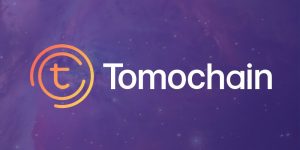
TomoChain supports all Ethereum smart contracts, ethereum community’s developer tools are also compatible with TomoChain and any decentralized application running on Ethereum can run on TomoChain as well making it easy for developers to easily switch between Ethereum and TomoChain. This makes TomoChain a great solution for dApps requiring high throughput and speed.
TomoChain is focused on adding dApps to the platform, integrating TomoX (its decentralized exchange), and as you all know we have covered Tomchain on several occasions and is a team favorite.
TomoX is in the testing phase and will be the decentralized exchange that Tomochain team is building. But it should integrate into the TomoChain blockchain this year. Finally, with TomoX in development and a host of dApps running on its blockchain, TomoChain plans to ramp up marketing activities toward the end of 2019.
Also to encourage dApp development, TomoChain regularly hosts events such as hackathons, workshops, and contests. Since launching its mainnet at the end of 2018, it already has over 17 dApps live on its platform.
Tomochain Possible Risks: Ethereum is the main competitor of Tomochain and with the developer might which Ethereum has, Tomochain faces tough competition in a congested space. After the launch of mainnet, it is to be seen how the development of killer dapps proceed on Tomochain blockchain.
Tezos
Tezos is an open-source platform for assets and applications that can evolve by upgrading itself. Stakeholders govern upgrades to the core protocol, including upgrades to the amendment process itself. The Tezos blockchain project was founded by a US company, Dynamic Ledger Solutions, as an alternative to Ethereum.
Important features in Tezos include.
Self-Amendment – Self-amendment allows Tezos to upgrade itself without having to split (“fork”) the network into two different blockchains.
On-Chain Governance – In Tezos, the election cycle provides a formal and systematic procedure for stakeholders to reach agreement on proposed protocol amendments.
Decentralized Innovation – Fosters an active, open, and diverse developer ecosystem that is incentivized to contribute to the protocol.
Smart Contracts & Formal Verification – Tezos facilitates formal verification, a technique used to improve security by mathematically proving properties about programs such as smart contracts.
Delegation – Users who do not wish to participate directly in the consensus protocol have the option to delegate their rights to other users to participate on their behalf.
In 2018, Tezos had its own share of controversies when with $232 million in their ICO, the management at Tezos has an internal conflict.
Important projects building on Tezos include
- Tezsure -Tezsure is a decentralized insurance marketplace. Powered by AI and the Tezos blockchain.
- MoneyTrack – Using Tezos for shared, secured, traceable, trusted and automated management of Directed Money programs.
- VIAZ – First major decentralized peer to peer funding platform on Tezos
- Clause – Translating legal documents to smart contracts
Recently, BTG Pactual, Brazil’s fifth-largest bank, plans to utilize the Tezos blockchain for security token offerings potentially worth $1 billion.
Tezos Possible Risks: Tezos has been marred with lots of controversies. Conflicting management has made a very relevant business proposition slow, which has somewhat resulted in losing people’s interest.
Source: Coingecko, Tezos
Quant
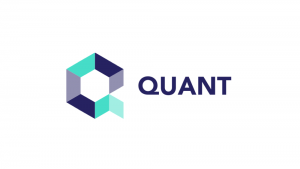
Overledger is the world’s first blockchain operating system (OS) that not only connects blockchains to one another but also connects existing networks to blockchain and facilitates the creation of internet-scale multi-chain applications otherwise known as MApps. The applications can communicate, migrate and exchange information and value, regardless of the ledgers on which they’ve been deployed. Overledger enables users to build decentralized multi-chain applications which aren’t single-blockchain dependent.
Quant has introduced a concept of treaty contracts. Smart contracts are restricted to single blockchains. Treaty contract enables cross-blockchain communication. For example, Ethereum smart contract listening to events on Ripple! Treaty Contracts and are currently in the testing phase before going live.
Headed by CEO, Gilbert Verdian, Quant currently has offices in the UK, Switzerland, Australia, Armenia (Research Lab) and soon to be opening one in New York to meet client demand.
Products:
- GoVerify: GoVerify allows people to verify and check that any email, SMS, letter or phone call received is legitimate and actually from the company they appear to be from.
- Atlas: Enables cross border open banking.
Quant Network is a part of the Oracle Global Start-up Ecosystem.
Quant Network will be connecting Binance Chain to their Overledger operating system, solving interoperability.
It has also partnered with SIAchain to integrate its infrastructure into Overledger
Quant has been named as a Gartner Cool Vendor in Blockchain Technology for 2019
Quant Possible Risks: Quant is a direct competitor of Cosmos, who is way ahead in adoption. With the introduction of Polkadot, competition increased. Quant has a promising technology and it needs to be seen how it gets adopted in the real world.
COMPARISON CHART
Get further details here
Other notable mentions
Zilliqa boasts of tps of 2800+. Mainnet was launched in January 2019. Zilliqa recently added Smart Contracts to Its Blockchain.
Ontology has 200+ core team members. It launched it’s mainnet 1 year back. Stablecoin Paxos is built on Ontology. Recently Ontology released it’s Sharding TestNet.
One of the Top Staking Platforms. Recently there has been the successful transition from Proof of Work to Proof of stake in February. Currently the yearly ROI is around 67%, however, will decrease over time with the greater NRG being staked. Smart-Contracts will be enabled on Energi 3.0 release, which hasn’t happened yet.
Aergo is an enterprise-ready blockchain. Its solution includes Identity authentication, Payment settlement, Secure e-Voting, Document Management, IoT etc. Aergo is now integrating with Binance Chain. Aergo mainnet went live on April 2019, however, it is under incubation.
Polkadot is an interoperability solution. It is an open-source project founded by the Web3 Foundation. Web3 Foundation has commissioned five teams and over 100 developers to build Polkadot. At the recent Token Sale, the project was valued at $1.2 Bn. Notable projects partnering with Polkadot include Chainlink, 0x Protocol, Ocean Protocol
Hyperledger is an open-source collaborative effort created to advance cross-industry blockchain technologies. It is a global collaboration, hosted by The Linux Foundation, including leaders in finance, banking, Internet of Things, supply chains, manufacturing, and Technology. Hyper ledger members include big companies like Accenture, Cisco, IBM, SAP, Intel, JP Morgan, etc.


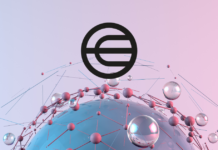
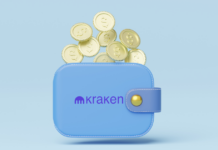
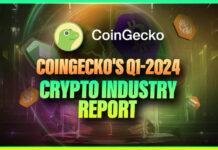
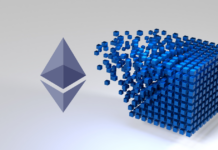
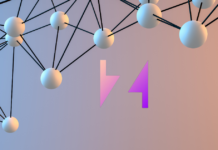


















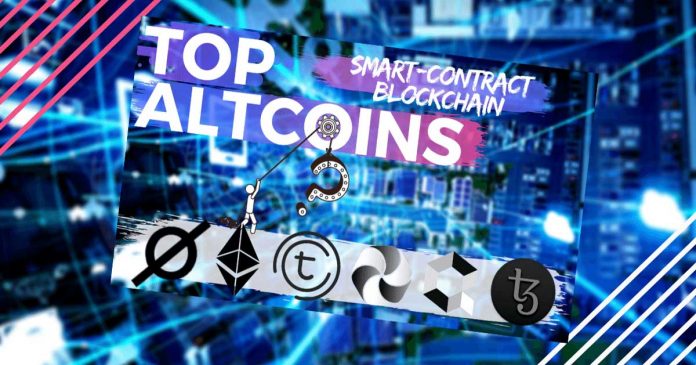


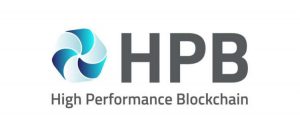
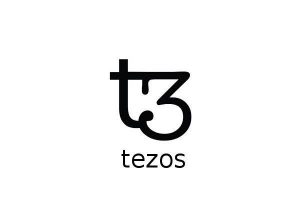

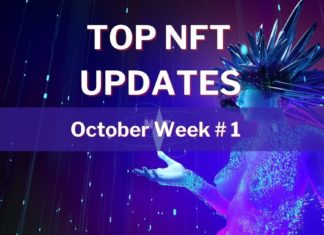


Excellent way of explaining, and fastidious paragraph to obtain facts aboht my presentation focus, which i am going to present in university.
I am regular visitor, how are yoou everybody?
This post posted at this website is actually nice.